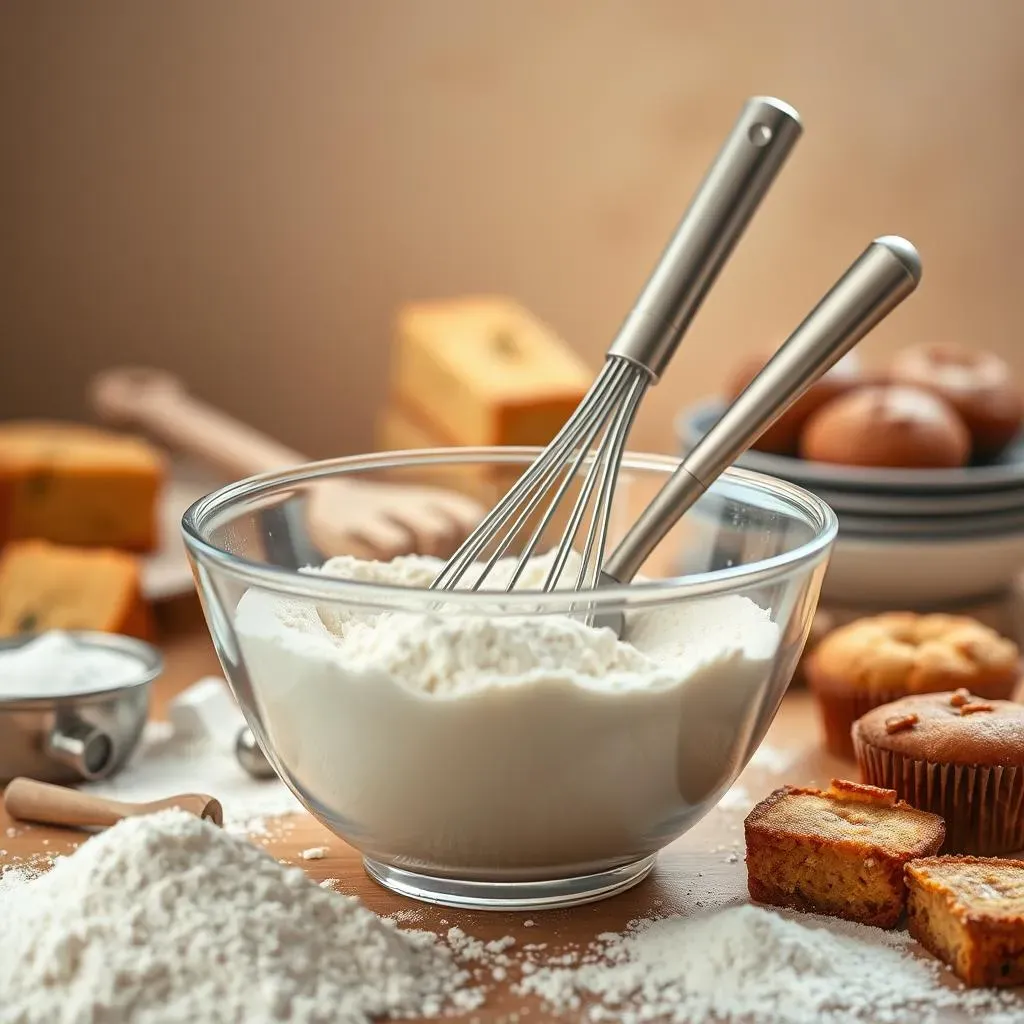Table of Contents
Ever stared blankly at a recipe, realizing you're missing a key ingredient – heavy cream? Don't panic! We're diving into the age-old question: can you substitute sour cream for heavy cream? This isn't a simple yes or no answer. The success of your substitution depends heavily on the recipe itself. This article serves as your ultimate guide, exploring the nuances of swapping these two creamy contenders. We'll explore the key differences between sour cream and heavy cream, examining their fat content, texture, and flavor profiles. Then, we'll tackle the burning question of "can you substitute sour cream for heavy cream" in both sweet and savory applications. We'll dissect specific recipe types—from fluffy cakes to rich sauces—to help you determine when a swap is a smart move and when it might lead to culinary disaster. Get ready to master the art of ingredient substitution and unlock a world of culinary flexibility!
Can You Substitute Sour Cream for Heavy Cream in Baking?

Can You Substitute Sour Cream for Heavy Cream in Baking?
Understanding the Differences
Let's be honest, sour cream and heavy cream aren't twins. They're cousins, maybe distant ones. Heavy cream is all about richness and fat; it's what gives your cakes that luxurious texture and helps create fluffy whipped cream. Sour cream, on the other hand, brings tang and a thicker consistency. It's the secret weapon in many savory dishes, lending a delightful sharpness.
The key difference lies in their fat content and acidity. Heavy cream boasts a much higher fat percentage (around 36%), contributing to its airy texture when whipped. Sour cream, typically around 20% fat, is naturally more acidic due to the fermentation process. This acidity can impact the rise of baked goods and alter the overall flavor.
Ingredient | Fat Content (approx.) | Acidity |
|---|---|---|
Heavy Cream | 36% | Low |
Sour Cream | 20% | High |
Cakes and Cupcakes: A Risky Substitution
When it comes to cakes and cupcakes, substituting sour cream for heavy cream is a gamble. The higher acidity of sour cream can react with the leavening agents (baking powder or baking soda), potentially hindering the rise and resulting in a dense, flat cake. The tangy flavor might also clash with the sweetness of the cake, creating an unexpected and possibly unpleasant taste.
While some recipes might tolerate a partial swap (maybe replacing a portion of the heavy cream with sour cream), it's generally best to avoid a complete substitution in recipes that rely on the lightness and richness of heavy cream for their texture. If you're desperate, try a small test batch first to see how the sour cream affects the outcome.
- Cakes requiring a light and airy texture
- Recipes where the heavy cream is used for whipping
- Cakes with delicate flavor profiles
Other Baked Goods: Proceed with Caution
For other baked goods like muffins, quick breads, or cookies, the substitution might be more forgiving. In these recipes, the leavening isn't as crucial, and the sour cream's thickness might even contribute to a slightly denser, moister texture. However, keep in mind that the tangy flavor will be present, which might not be desirable in all recipes.
The best approach is to experiment cautiously. Start by substituting a small amount of sour cream for heavy cream, and observe the results. Taste-testing is essential! If the tang is overpowering or the texture is off, you might need to adjust the recipe further, perhaps by adding more sugar to balance the acidity or reducing the amount of sour cream used. Remember, baking is a science, but it's also an art form – embrace the experimentation!
Using Sour Cream Instead of Heavy Cream in Savory Dishes: What to Expect

Using Sour Cream Instead of Heavy Cream in Savory Dishes: What to Expect
Soups and Stews: A Creamy, Tangy Twist
Now, let's talk savory dishes. In soups and stews, sour cream can be a surprisingly good substitute for heavy cream. The higher fat content of heavy cream contributes to richness and a velvety texture, which sour cream can replicate to some extent. However, remember that sour cream will introduce a distinct tanginess. This might be a welcome addition to some soups (think creamy tomato soup with a hint of acidity), but it could clash with others. Think about the overall flavor profile of your recipe before making the swap.
The texture will also be slightly different. Sour cream is thicker than heavy cream, so your soup or stew might end up a bit thicker than intended. You might need to adjust the amount of broth or other liquids to achieve your desired consistency. Don't just dump in a cup of sour cream and hope for the best; start with a smaller amount and add more gradually until you reach the right consistency and flavor.
Dish | Sour Cream Works Well? | Considerations |
|---|---|---|
Creamy Tomato Soup | Yes | Enhances the tanginess |
Chicken Noodle Soup | Maybe | Could clash with broth flavors |
Beef Stew | Yes (with caution) | Might thicken the stew excessively |
Sauces and Dips: A Tangy Transformation
When it comes to sauces and dips, sour cream can be a fantastic replacement for heavy cream, particularly if you want a tangier flavor profile. Think creamy dips like spinach artichoke dip or a vibrant cilantro-lime sauce. The thicker consistency of sour cream works well in dips, adding a nice, creamy texture without being overly runny. However, if you’re making a sauce for a delicate dish, the sour cream's acidity might overpower the other flavors. This is where a little experimentation comes in handy.
Remember to temper the sour cream before adding it to hot sauces to prevent curdling. Slowly whisk a small amount of the hot sauce into the sour cream, then gradually add the sour cream mixture back into the sauce, stirring constantly. This gentle approach ensures a smooth, creamy consistency. If you're aiming for a truly luxurious texture, you might consider adding a touch of butter or cream cheese alongside the sour cream for an even richer result.
Can Sour Cream Substitute for Heavy Cream: A RecipeSpecific Approach

Can Sour Cream Substitute for Heavy Cream: A RecipeSpecific Approach
Cheesecakes: A Surprisingly Good Swap (Sometimes)
Cheesecakes are a fascinating case. The richness of heavy cream contributes to a creamy, smooth texture. Sour cream, with its tang and thicker consistency, can sometimes create a surprisingly delicious cheesecake, especially if you're going for a tangier flavor profile. However, the higher acidity might interfere with the setting process, leading to a slightly less firm cheesecake. It also changes the overall flavor, making it less sweet and more tart. Many recipes specifically call for sour cream in the cheesecake batter, highlighting its suitability in certain scenarios. But if you're aiming for a classic, ultra-smooth cheesecake, sticking with heavy cream is the safer bet.
The key here is understanding your recipe. If the recipe already incorporates sour cream, feel free to experiment with increasing the amount slightly to compensate for the absence of heavy cream. If the recipe relies solely on heavy cream for richness, however, the substitution could lead to an unexpected texture and flavor. Consider the balance between the tang and sweetness; you might need to adjust the sugar content to compensate for the sour cream's acidity.
Recipe Type | Sour Cream Substitution | Considerations |
|---|---|---|
Classic New York Cheesecake | Not Recommended | Will alter texture and flavor significantly |
Sour Cream Cheesecake | Good Substitution | May need to adjust sugar content |
Cream Cheese Frosting | Potentially Acceptable | Will add tanginess; test a small batch first |
Pasta Dishes: A Creamy, Tangy Coating
In pasta dishes, sour cream can often stand in for heavy cream, delivering a creamy, albeit tangier, sauce. The thickness of sour cream means you might need to adjust the amount of pasta water or broth to achieve the desired consistency. However, the tanginess can be a welcome addition to certain pasta sauces, especially those with bolder flavors like pesto or creamy tomato. For delicate pasta dishes with lighter sauces, however, the sour cream’s acidity might be too overpowering.
The key is to consider the other ingredients in the dish. If you're working with robust flavors that can stand up to the sour cream's tang, then a substitution is likely to work well. If you're making a delicate Alfredo sauce, however, sticking with heavy cream is a much better choice. Remember to always temper the sour cream before adding it to hot pasta to avoid curdling. This is a crucial step for achieving a smooth, creamy sauce.
- Pasta with robust flavors (e.g., pesto, tomato-based sauces): Sour cream can be a good substitute.
- Delicate pasta sauces (e.g., Alfredo): Stick with heavy cream for a better result.
- Always temper sour cream before adding it to hot sauces to prevent curdling.
Whipped Cream: A No-Go Zone
Let's be clear: sour cream will *not* whip into a fluffy cloud like heavy cream. The higher fat content and lower acidity of heavy cream are essential for creating that airy texture. Sour cream's higher acidity and thicker consistency prevent it from whipping effectively. Trying to whip sour cream will result in a curdled, lumpy mess, rather than the light and airy whipped cream you're aiming for.
If you need whipped cream, don't even think about substituting sour cream. Heavy cream is your only option for achieving that desired texture and consistency. There are also dairy-free alternatives, such as coconut cream, that can be whipped effectively. But sour cream simply isn't designed for whipping, and any attempt to do so will likely end in culinary disappointment. Stick to the right tool for the job!